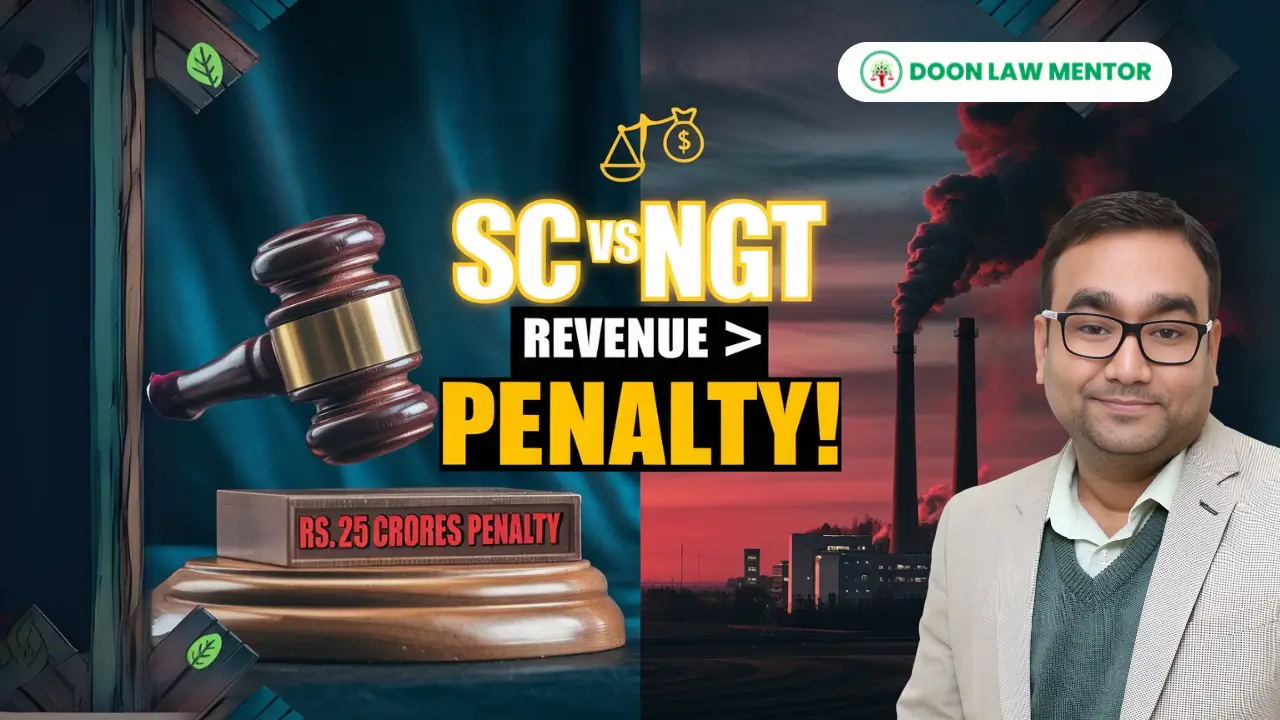Doctrine of Pith and Substance: An Overview
The Doctrine of Pith and Substance is a critical legal principle in constitutional law, especially in federal structures like India. This doctrine is used by courts to determine the legislative competence of a law-making body when a law appears to encroach upon the jurisdiction of another legislative body. Instead of invalidating a law due to minor encroachments, the doctrine focuses on the substance or core of the law, ensuring its validity as long as the main subject falls within the enacting body’s jurisdiction.
In the Indian Constitution, legislative powers are divided between the Union and the States under the Seventh Schedule, which contains three lists: the Union List, the State List, and the Concurrent List. Disputes often arise when both central and state governments legislate on overlapping subjects. The Doctrine of Pith and Substance helps resolve such disputes by focusing on the true purpose of the law, allowing incidental overlaps without invalidating the legislation.
Table of Contents
Doctrine of Pith and Substance in Federal Systems
The Doctrine of Pith and Substance is essential in federal systems where legislative powers are distributed between two levels of government. In India, the doctrine plays a significant role in maintaining the balance between the central and state legislatures, allowing each to legislate effectively within their respective domains.
Key Features of the Doctrine:
- Examination of Legislative Competence: Courts determine whether the law, in its substance, falls within the competence of the enacting legislature.
- Substance Over Incidental Encroachments: Even if a law incidentally touches upon a subject outside the enacting body’s jurisdiction, it will not be invalidated if its pith is within the enacting body’s power.
- Preservation of Legislative Intent: The courts prioritize the intent behind the law, ensuring that legitimate legislative actions are not thwarted due to technical overlaps.
Example:
Consider a state law regulating the sale of alcohol that incidentally affects interstate trade. The courts will examine whether the substance of the law falls under the State List subject of public health. If it does, the law will be upheld despite its incidental impact on interstate commerce (a Union List subject).
Metaphor: Think of this doctrine as a filter that sifts through the peripheral elements of a law to identify its true core, ensuring that the law is not invalidated due to incidental overlaps.
Importance of the Doctrine of Pith and Substance in India
The Doctrine of Pith and Substance ensures that the division of legislative powers between the Union and States remains intact without unnecessary invalidation of laws. It allows for incidental overlaps between the Union List and State List, ensuring that laws serving a valid purpose are not struck down.
Maintaining Legislative Balance:
The doctrine plays a critical role in preserving the federal balance in India, where both the central and state governments have distinct areas of jurisdiction. By focusing on the law’s substance, the doctrine helps resolve conflicts between these bodies without compromising their respective legislative powers.
Example:
In State of Bombay v. F.N. Balsara (1951), the Supreme Court applied the Doctrine of Pith and Substance to uphold a state law prohibiting the sale of alcohol. The law was challenged on the grounds that it encroached on trade and commerce, a Union List subject. However, the Court held that the substance of the law was the regulation of public health, a State List subject, and the incidental encroachment on trade and commerce did not invalidate it.
Application of the Doctrine in Indian Constitution
The Seventh Schedule of the Indian Constitution divides legislative powers into three lists:
- Union List: Subjects under the exclusive jurisdiction of the central government (e.g., defense, foreign affairs, banking).
- State List: Subjects under the jurisdiction of the state governments (e.g., police, public health, land).
- Concurrent List: Subjects on which both the central and state governments can legislate (e.g., criminal law, marriage, bankruptcy).
Resolving Conflicts with the Doctrine:
When there is a conflict between laws made by the central and state governments, the Doctrine of Pith and Substance helps resolve the issue by examining the core subject matter of the law. The court focuses on whether the substance of the law falls within the jurisdiction of the respective legislative body. If the law’s pith is within the enacting legislature’s domain, incidental overlaps into another jurisdiction do not invalidate it.
Example: A state law regulating land use (a State List subject) might incidentally affect environmental protection (a Union List subject). The court would uphold the law if the substance is focused on land use, not environmental regulation.
Case Study: State of Rajasthan v. G. Chawla (1959)
In State of Rajasthan v. G. Chawla (1959), the Supreme Court of India applied the Doctrine of Pith and Substance to resolve a conflict between the Indian Telegraph Act (a central law) and a state law imposing a tax on telegraph services. The state law was challenged on the grounds that it encroached on a Union List subject. However, the Court concluded that the substance of the state law was taxation, a State List subject, and the incidental overlap into a Union subject did not invalidate the law.
This case illustrates how the doctrine ensures that state laws serving a legitimate purpose are upheld despite incidental overlaps with Union subjects.
You can access the full case judgment on LiveLaw.
Judicial Interpretation of the Doctrine
Over the years, the Indian judiciary has used the Doctrine of Pith and Substance to address jurisdictional disputes between the Union and States. The doctrine allows the courts to uphold laws based on their core purpose, ensuring that minor overlaps with another jurisdiction do not lead to the law’s invalidation.
Key Judicial Principles:
- Primary Focus on Substance: The judiciary focuses on the true nature of the law rather than its incidental encroachments.
- Legislative Flexibility: The doctrine grants flexibility to legislative bodies, recognizing that incidental overlaps are inevitable in a federal system.
- Preserving Legislative Intent: Courts give precedence to the legislative intent, ensuring that laws are not struck down due to technicalities.
Case Study: In Union of India v. Shah Goverdhan L. Kabra Teachers’ College (2002), the Court applied the Doctrine of Pith and Substance to uphold a state law regulating educational institutions, even though it incidentally affected central subjects. The Court found that the substance of the law was within the Concurrent List, and thus, the law was valid.
For more details, you can access the case on SCC Online here.
Landmark Case: Hoechst Pharmaceuticals Ltd. v. State of Bihar (1983)
In Hoechst Pharmaceuticals Ltd. v. State of Bihar (1983), a conflict arose between a central law under the Essential Commodities Act and a state law concerning sales tax. The state law was challenged for encroaching on the Union List, but the Supreme Court ruled that the law’s substance was taxation, a State List subject. The incidental overlap with the central domain did not invalidate the law.
This case highlights how the Doctrine of Pith and Substance preserves legislative competence while allowing for incidental overlaps between different legislative domains.
Read the full case on Indian Kanoon.
Doctrine of Pith and Substance in Modern Constitutional Law
In today’s increasingly complex legislative landscape, the Doctrine of Pith and Substance continues to play a crucial role in resolving conflicts between state and central laws. As legislatures address new and overlapping areas such as digital governance, healthcare, and environmental regulations, the doctrine ensures that valid laws are not struck down due to minor overlaps.
Benefits of the Doctrine:
- Preserving Legislative Competence: The doctrine allows laws enacted by the appropriate legislative body to remain valid, even if they incidentally affect subjects outside its domain.
- Judicial Flexibility: The doctrine gives courts the flexibility to focus on the law’s core purpose rather than technical overlaps.
- Promoting Legal Coherence: By focusing on the substance rather than incidental encroachments, the doctrine ensures legal coherence and consistent governance.
Example: In cases involving complex issues like environmental protection or digital data regulation, where both the Union and State governments may have overlapping jurisdictions, the doctrine ensures that laws with a legitimate purpose are not invalidated.
Conclusion
The Doctrine of Pith and Substance is a foundational principle in Indian constitutional law, ensuring that conflicts between central and state legislatures are resolved by focusing on the core substance of the law. By allowing incidental overlaps, the doctrine maintains the federal balance and prevents the unnecessary invalidation of laws.
Through various landmark cases, including State of Bombay v. F.N. Balsara, Hoechst Pharmaceuticals Ltd. v. State of Bihar, and Union of India v. Shah Goverdhan L. Kabra Teachers’ College, the doctrine has ensured that the division of legislative powers in India remains intact while promoting legislative efficiency and legal stability. In modern constitutional law, the doctrine will continue to play a pivotal role in resolving conflicts in an ever-evolving legislative landscape.
FAQs: Doctrine of Pith and Substance
1. What is the Doctrine of Pith and Substance?
The Doctrine of Pith and Substance is a legal principle that focuses on the substance of a law rather than its incidental effects. It is used to determine the legislative competence of a law-making body in a federal structure.
2. Why is the Doctrine of Pith and Substance important in Indian law?
This doctrine is essential in India’s federal system as it resolves conflicts between central and state laws, ensuring that laws are not invalidated due to incidental overlaps.
3. How is the Doctrine of Pith and Substance applied?
Courts apply the doctrine by examining the core purpose of the law. If the substance of the law falls within the legislative competence of the enacting body, incidental overlaps are allowed.
4. Can a law be invalidated under the Doctrine of Pith and Substance?
A law can be invalidated if its substance falls outside the jurisdiction of the legislature that enacted it. However, incidental encroachments typically do not lead to invalidation.
5. What are some key cases involving the Doctrine of Pith and Substance?
Notable cases include State of Bombay v. F.N. Balsara, Hoechst Pharmaceuticals Ltd. v. State of Bihar, and Union of India v. Shah Goverdhan L. Kabra Teachers’ College, where the doctrine was applied to resolve legislative conflicts.
#DoctrineOfPithandSubstance #ConstitutionalLaw #IndianFederalism #JudiciaryAspirants #CaseLaws #LegalAnalysis #StatutoryInterpretation






6 Comments
I don’t think the title of your article matches the content lol. Just kidding, mainly because I had some doubts after reading the article.
Can you be more specific about the content of your article? After reading it, I still have some doubts. Hope you can help me.
Thank you for your sharing. I am worried that I lack creative ideas. It is your article that makes me full of hope. Thank you. But, I have a question, can you help me?
Thank you for your sharing. I am worried that I lack creative ideas. It is your article that makes me full of hope. Thank you. But, I have a question, can you help me?
I don’t think the title of your article matches the content lol. Just kidding, mainly because I had some doubts after reading the article.
Can you be more specific about the content of your article? After reading it, I still have some doubts. Hope you can help me.